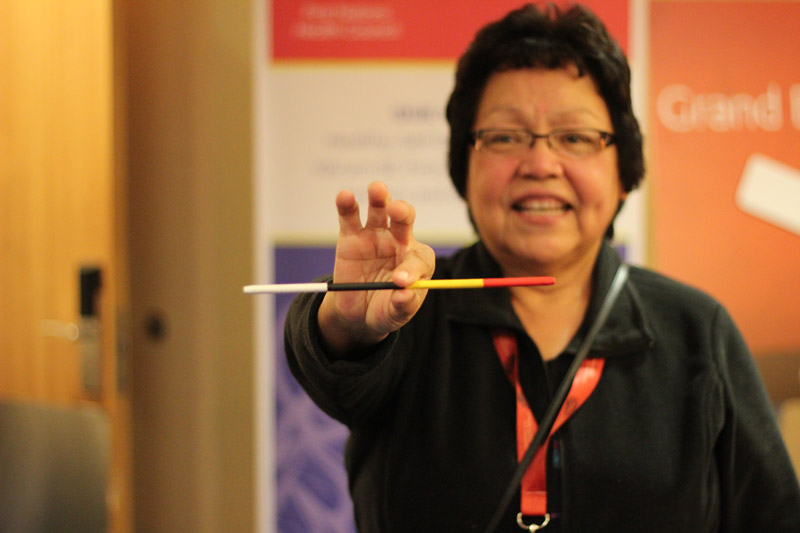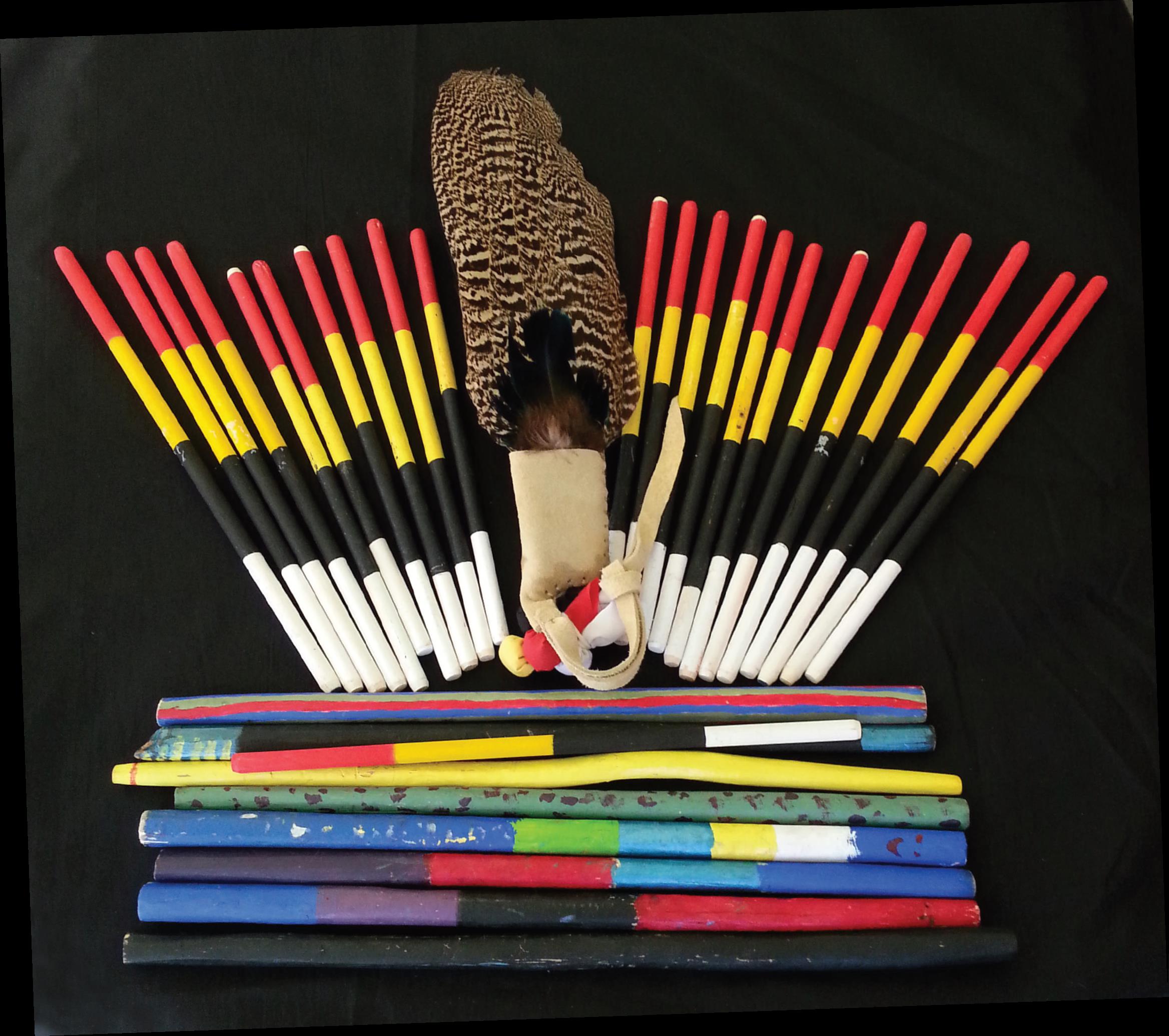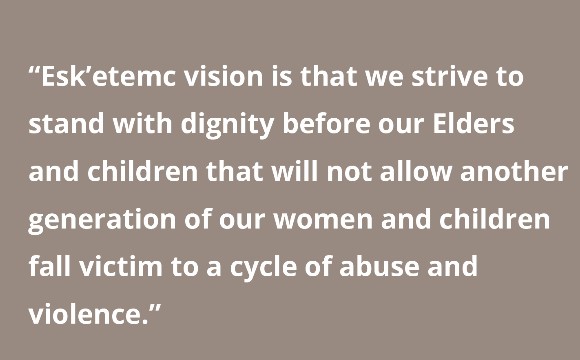By Charlene Belleau, Chair, First Nations Health Council

As we join together this November 25 to mark the United Nations International Day for the Elimination of Violence Against Women, I reflect on how this work goes beyond a single day observance. I believe we are all called on to do this work together and accept responsibility for our children and families. Eliminating violence starts with us, with every individual. This in turn creates safer places for children, families and communities.

One way we do this work is through the Commitment Sticks program, a initiative launched at Gathering Wisdom in 2015 using a design created by Esk'etemc Elder Fred Johnson Sr. to signify the sacred responsibilities we have for the health and safety of our Indigenous women and girls. At that event more than 120 Chiefs and leaders held the sticks high and committed to live violence free, and to collectively work together to stop violence against Indigenous women and girls. They acknowledged that honouring our women—grandmothers, mothers, sisters, daughters, wives, partners and nieces—will bring balance back into our lives and ensure healthy and strong families and communities into the future. First Nations across BC have used the Commitment Sticks event toolkit to showcase their community commitment to tackle this issue and bring forward solutions.
Commitment Sticks symbolize an issue that we can—and must—address. They flow from the idea that we must be involved in our own healing; it's not a matter of bringing in "experts" who can fix the community, but instead it's us, our culture, our leaders—guided by tradition and ceremony—that can help us to live violence free and remind us of the value of the lives of Indigenous women and girls. The colours of the Commitment Stick represent the need for the four races to work together to stop violence against Indigenous women and girls, with an understanding that we are all equally valuable. With the red, we honour and mourn our murdered and missing Indigenous women; with the yellow, we honour our breath of life; with the black, we honour our body; and with the white, we honour the knowledge and wisdom of the Elders.
Many other programs and campaigns exist in the fight to end violence against women and girls. The Moose Hide campaign is a grassroots movement of Indigenous and non-Indigenous men and boys with a mission to end violence against women and children. A brotherhood for wellness is found in the Dude's Clubs gatherings that focus on peer-based learning and holistic forms of healing including the medicine wheel. Dude's Club is supported in part by FNHA and was featured at a recent Northern caucus presentation. The role that addictions and substance abuse play in violence against women and girls is tackled by many programs like those during National Addiction Awareness Week November 25-December 1 which includes events in most of our communities. Sobriety and healing helps us to heal from violence or stop violence.
So what can we do? We need to take notice of all the good things happening as part of this United Nation observance and National Addiction Awareness Week. We need to remember our commitment to not allow another generation of our women and children to fall victim to a cycle of abuse and violence. We need to understand the impact of physical violence, as well other forms of violence – emotional, mental or spiritual.
All of these programs and initiatives are part of raising awareness, reducing stigma, healing and changing minds and behavior. What we need is for all Leaders, frontline workers and community members to begin thinking this way and doing their part acknowledging this work every day. Violence against Indigenous women and girls is not just an issue now that it's before the media and the public—it's been an issue for several years. The government and the police may now have their programs, policies and procedures, but at the end of the day, violence against our women is also a community responsibility.
My push is for us to provide leadership and to do something ourselves, without worrying about what the government or police are doing about it. We might not be able to control what's going on in a big city or anywhere else, but we can start with our own families and communities and Nations. For example, Esk'etemc frontline workers and leadership work together and all agree that the cycle of intergenerational trauma, including violence, has to stop with us. Regardless of whether we were abused at residential school, we must not pass it on to our children. Each man has signed a pledge to live violence free, stop violence against women and hold other men accountable. I encourage all delegates to being their commitment sticks to Gathering Wisdom X in January 2020!


